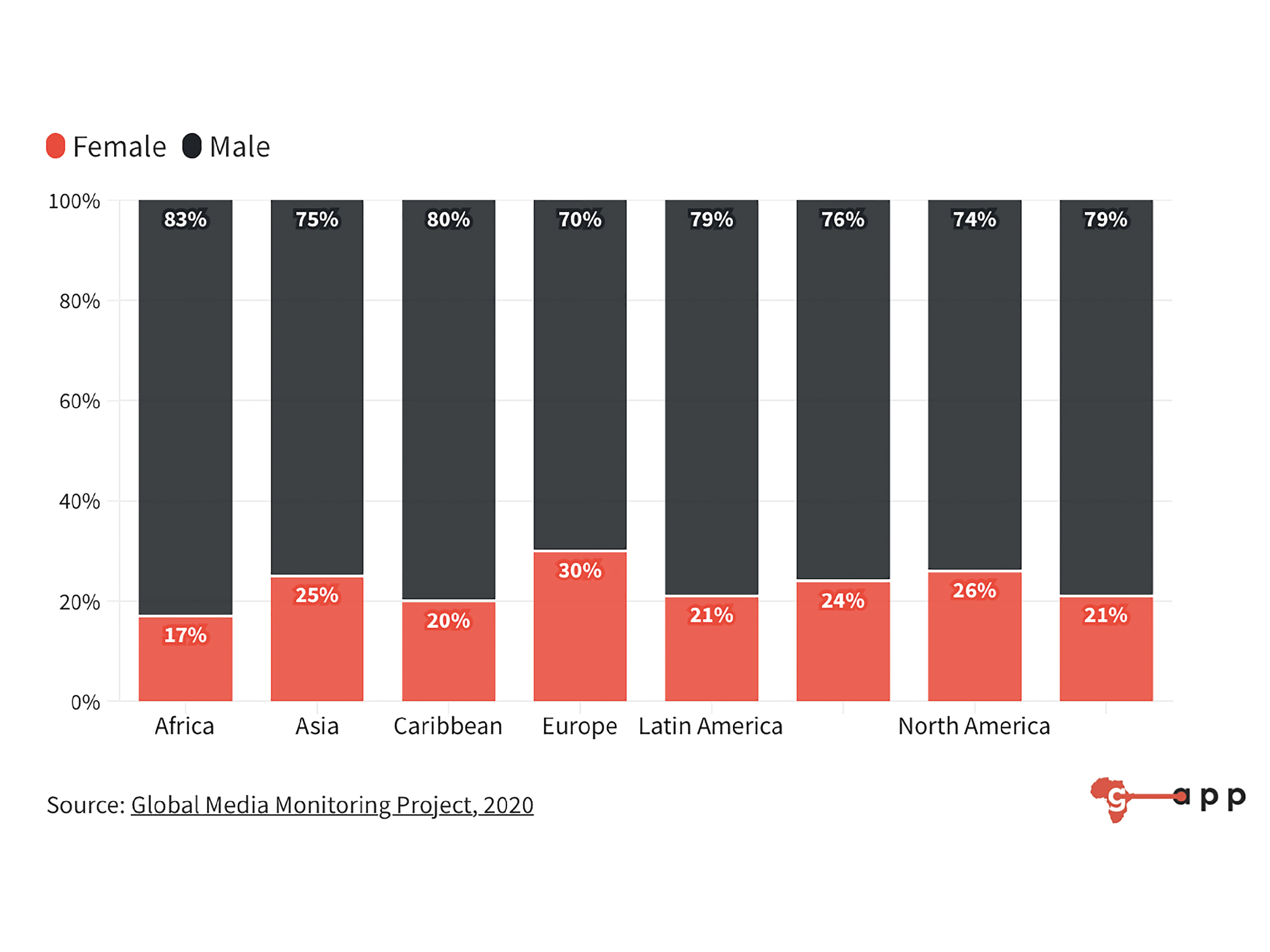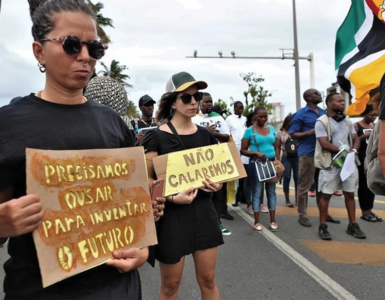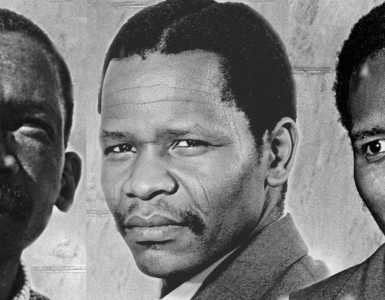CHANGE:25-year study shows Africa’s news media lags behind in closing the gender equality gap in the news
Women make up only 22% of the people seen, heard or read about in the news in Africa, the results of the Global Media Monitoring Project report launched on 14 July show. The performance of the continent’s news media has stagnated as that of media in the rest of the world has improved across the quarter century that the research has been running.
“At the world level, women are only 1 in 4 of subjects and sources in the news. This proportion is marginally better in the digital news space but at the cumulative pace of change over time, it will take at least 67 more years to close the average global gender equality gap in news media content,” Sarah Macharia, Coordinator of WACC’s Global Media Monitoring Project (GMMP) said.
However, in a more positive development, women in Africa tend to be featured more as subjects on science and health stories at 30%. Interestingly, this topic is also covered by more women reporters than average. The positive correlation supports the idea that having a more diverse newsroom leads to more diverse stories.
Happening every five years, the GMMP study is the largest and longest longitudinal study on gender in the world’s media. The 6th edition took place in 2020, in the midst of the pandemic and some adjustments had to be made on the schedule and data capture, including offline coding tools. Enumerators used the innovative GMMP app, developed and maintained by Code for Africa (CfA), a technical partner in the sixth GMMP survey, to record data. That meant doing heavy re-engineering around the 2015 code base. Additionally, users in different regions can now view results and interactively compare them with other regions, thanks to GenMAP, a customised visualisation tool, developed by CfA.
The app was designed to allow enumerators to capture the complex data points the study required, while still being accessible to volunteers with varying levels of computer proficiency. Additionally, the app was made available in English, French and Spanish to account for the over 100 countries the survey covers.
CfA participated in training country coordinators in Latin America, Middle East, North Africa and Asia Pacific to use the platform. In addition, CfA developed video tutorials with step-by-step guides on the different platform features. The final analysis was conducted using summary statistics generated from the platform.
Women are least visible in politics and economy
The analysis shows that women are much less visible in politics and the economy, subjects which often dominate news coverage across the world. Even when they make it to the news, women are still overwhelmingly being portrayed as “homemakers”, the GMMP study found. Worryingly, there was a decline in the number of women reporters in Africa, from 35% in 2015 to 32% in 2020. The report also indicates that they overwhelmingly cover gender-related issues at 65% and science and health at 43%. While 36% of the typical newsroom in Africa is made up of women reporters, 43% of science and health stories were covered by them. Women subjects and sources made 24% of all crime and violence stories in Africa and 23% of all social and legal issues.
Women reporters were also more likely to highlight gender inequality issues (16%) compared to men reporters (11%) just as they were more likely to include more women as subjects in their reporting at 26% and 19% respectively.
“The results are mixed with regard to the presence of women’s voices when reporting the Covid-19 crisis. The predictable continuity of this pandemic requires collective efforts to overcome it. The media must be on top of these efforts. Its role to shed light on the impact of Covid-19 on women’s lives is necessary and required,” Dr. Azza Kamel, GMMP MENA region co-ordinator said.
MONITORING STORIES
Hundreds of volunteers from 116 countries and territories convened late 2020 to get a snapshot of how gender was represented in the media for the Global Media Monitoring Project (GMMP). Over 30,000 stories that were broadcast, published or tweeted on 29 September 2020 were monitored.
Unlike previous studies, this year’s monitoring happened against the backdrop of the Covid-19 pandemic. As a result, the project, which was initially slated for April 2020, only started five months later. Various aspects of it had to be changed to accommodate the new reality.
Organisers, for instance, had to grapple with the overwhelming number of stories revolving around Covid-19. While stories had somehow diversified by the monitoring day, regions like North America and the Middle East still recorded 37% and 36% of Covid-19 stories respectively. To allow historical comparability, additional questions were included and enumerators asked to code the most relevant secondary topic.
NEW REALITIES
When it first started in 1995, the study looked into media stories from 71 countries. That number had grown to 116 countries by September 2020 and for the first time included Iraq, Central African Republic and Myanmar.
Over the last 25 years since the study started, media’s complexity has grown to encompass a wide array of outlets. In 1995, for instance, social media barely existed as we know it. Today, it is a formidable tool for reaching out to audiences, just as it is a powerful tool for getting feedback. Sadly, women feature far less on news websites and twitter feeds at just 16% on issues of politics and government.
• The Global Media Monitoring Project (GMMP) is coordinated by the World Association for Christian Communication (WACC), a global NGO that promotes communication rights for social justice. Code for Africa (CfA) is the continent’s largest network of civic technology and data journalism labs, with teams in 21 countries.






